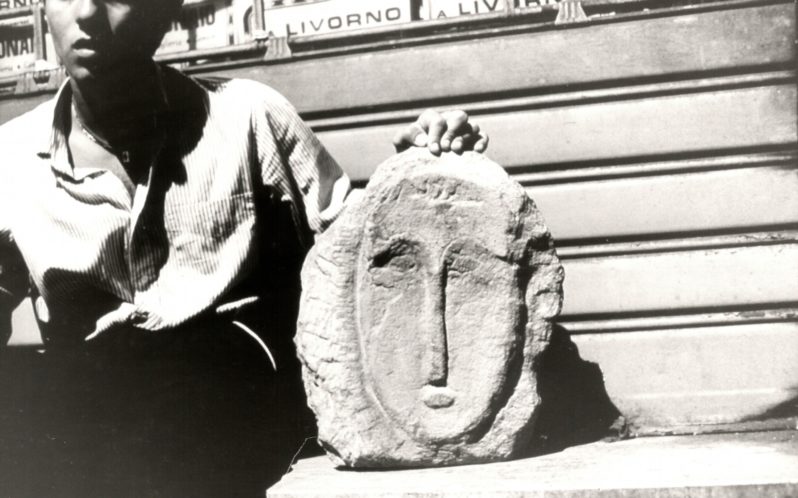Modigliani’s heads

Between falsehood and reality. It is possible to tell two stories about Modigliani’s heads: one gives credence to the legend of the heads thrown in the ditches and that, probably, everyone already knows how it ended; the other, that only emerged in the ’90s and brought three more heads to the scene, this time true.
In 1984 Livorno is celebrating the centenary of Amedeo Modigliani’s birth with an exhibition. With the occasion, the legend of the heads thrown by the artist in the ditches of Livorno, to get rid of it, regained vigour. The director of the Progressive Museum of Contemporary Art in Livorno, Vera Durbè, sustains the veracity of the story and gets the support of the municipality to start a dredging operation of the ditches in an attempt to find the lost heads.
In the first days of research nothing was found, but then, the 27th of July 1984, two stone heads were found, carved with essential and clear strokes. The news, in a very short time, went around the world, journalists and tourists run to Livorno, an exhibition is organized and a catalogue is written to present this incredible discovery. Famous Italian art critics attributed the discovered sculptures to Modigliani.
Jeanne Modigliani, the daughter of the artist, didn’t think the same but she can go to Livorno because she died before, falling from the stairs. Of the same opinion was Carlo Pepi, collector and great expert of Modigliani who directed the Native House of Amedeo Modigliani and worked for the Modigliani Legal Archives.
The 5th of August, another head was found, also judged to be an authentic Modigliani’s work.
Soon enthusiasm gave way to the mockery. Three students from Livorno claimed to Panorama, an important Italian magazine, that they have done the second heads found, using a drill, and they demonstrated it on live TV. The other two heads continued to be believed authentic. But also in this case the real author emerged: Angelo Froglia, who worked in the port of Livorno and was an aspiring artist, claimed to have made the other two sculptures to hit the art system and the art critics.
From the discovery of the century, to the mockery of the century.
In 1991 three more heads, declared to be Modigliani’s works, were presented to the press. The heads had been preserved for many years by Piero Carboni.
But what did he have in common with Modigliani? His uncle was Roberto Simoncini, Solicchio, portrayed in the painting “The beggar”, to whom Modigliani had given a trunk, containing some sculptures he made in 1909 and personal items, before leaving for Paris. Simoncini didn’t know the name of the artist, but kept the sculptures for many years, until the War.
Carboni had found three of them, one particularly damaged, after the war, in 1943, in the rubble of his uncle’s house. He had always kept them but only recently he understood that they could be of the great artist of Livorno.
Again the news caused a sensation but the world of art criticism remained silent.
Only Carlo Pepi, who had not fallen into the mockery of 1984, expressed in favor of the authenticity, after he had the chance to see one of the them from the real. Two well-known American experts have also expressed the same opinion. Moreover, emerged many people’s testimonies that supported Carboni’s thesis.
The heads were at the center of long legal troubles: at that time there was a vast association of delinquents aimed at counterfeiting works of art (Operation Modi). To this day the sculptures are recognized as authentic, but they are not publicly exposed.

